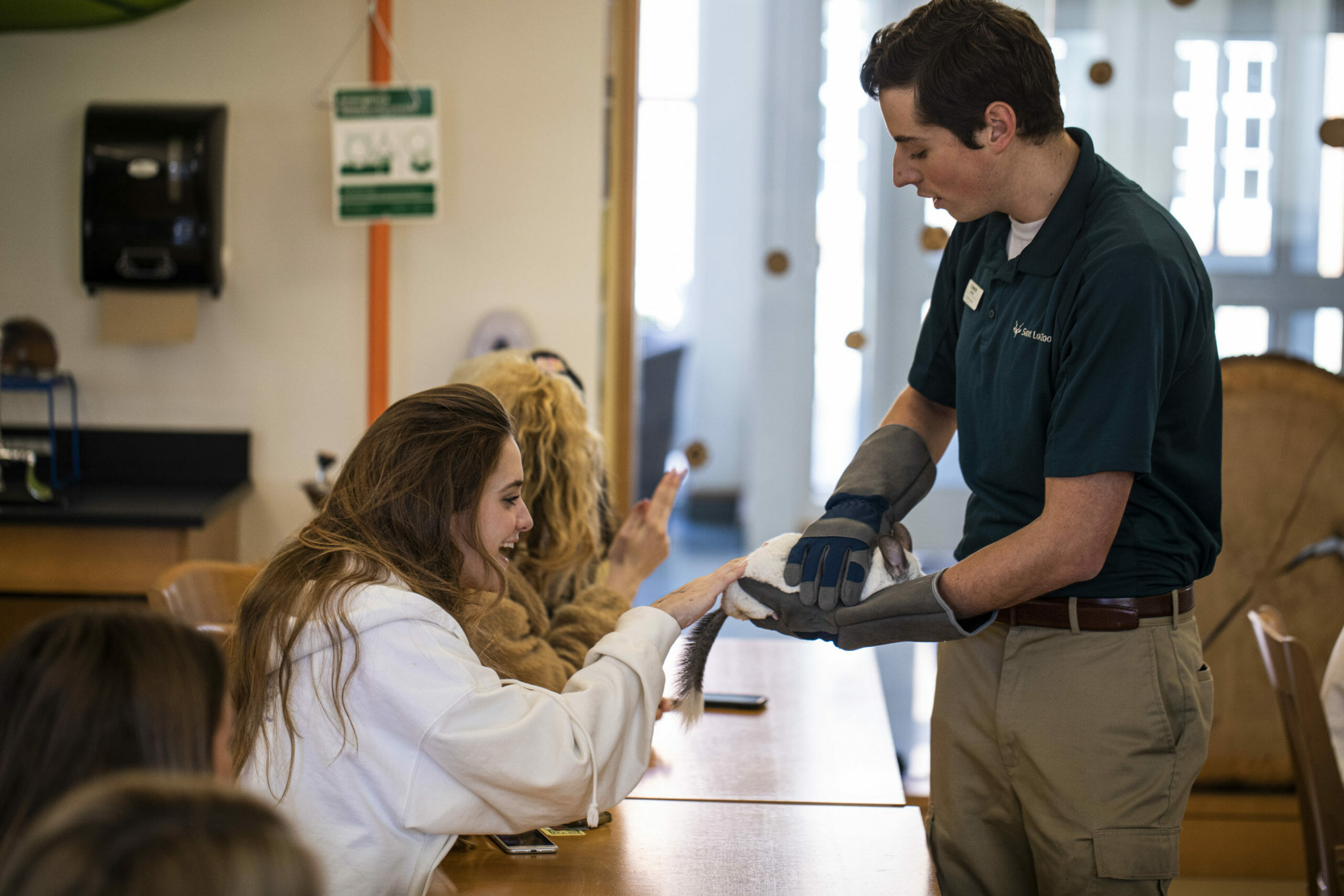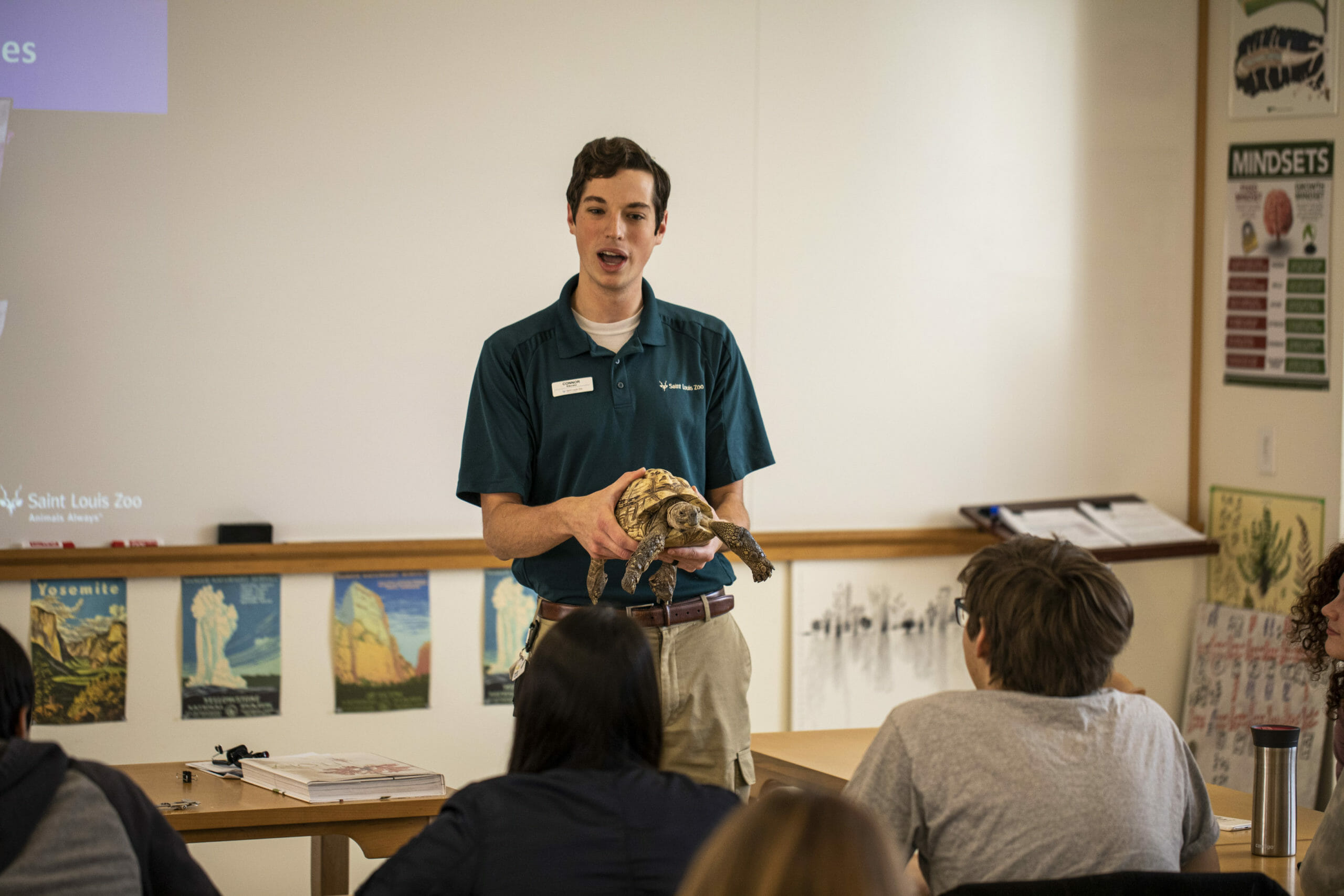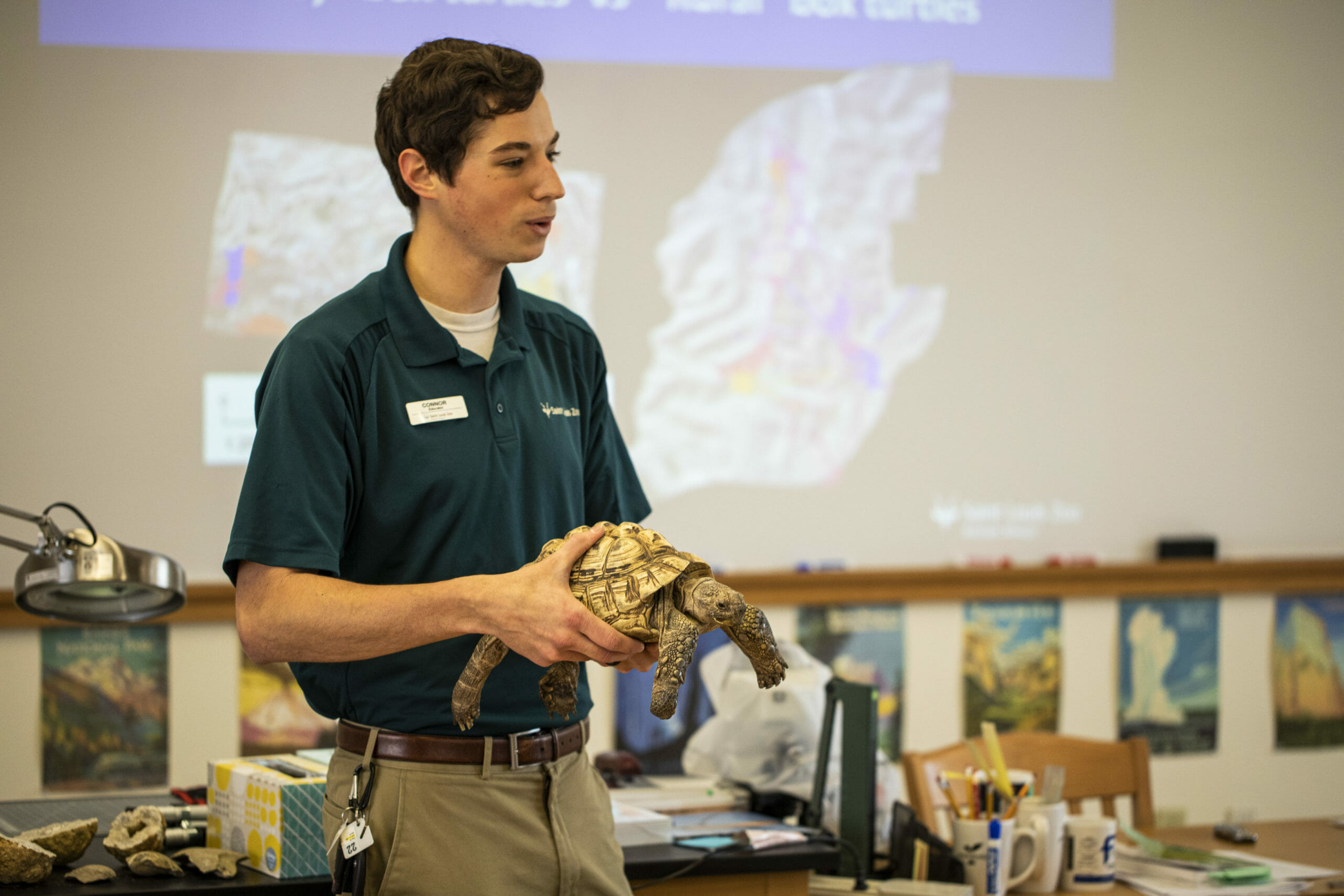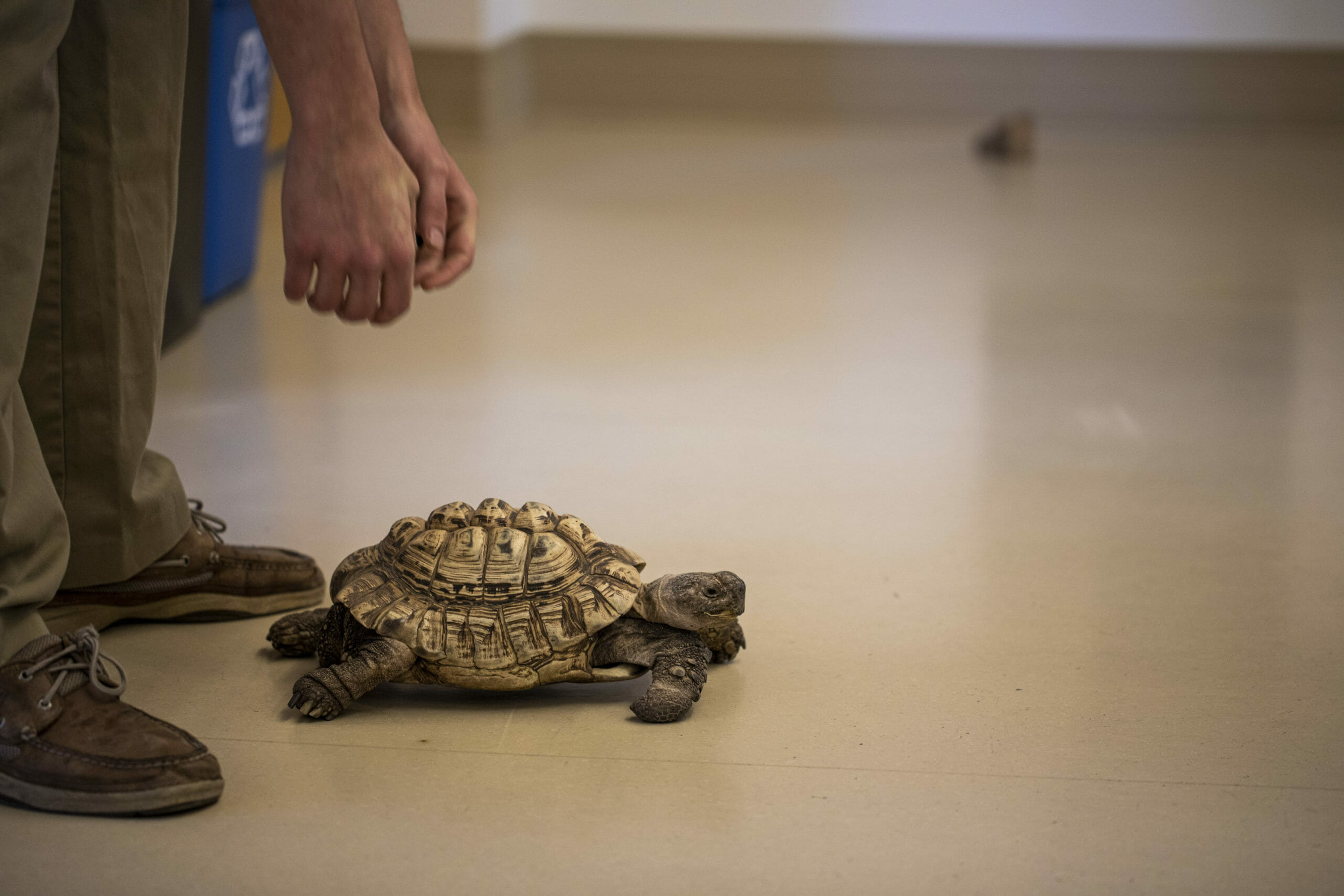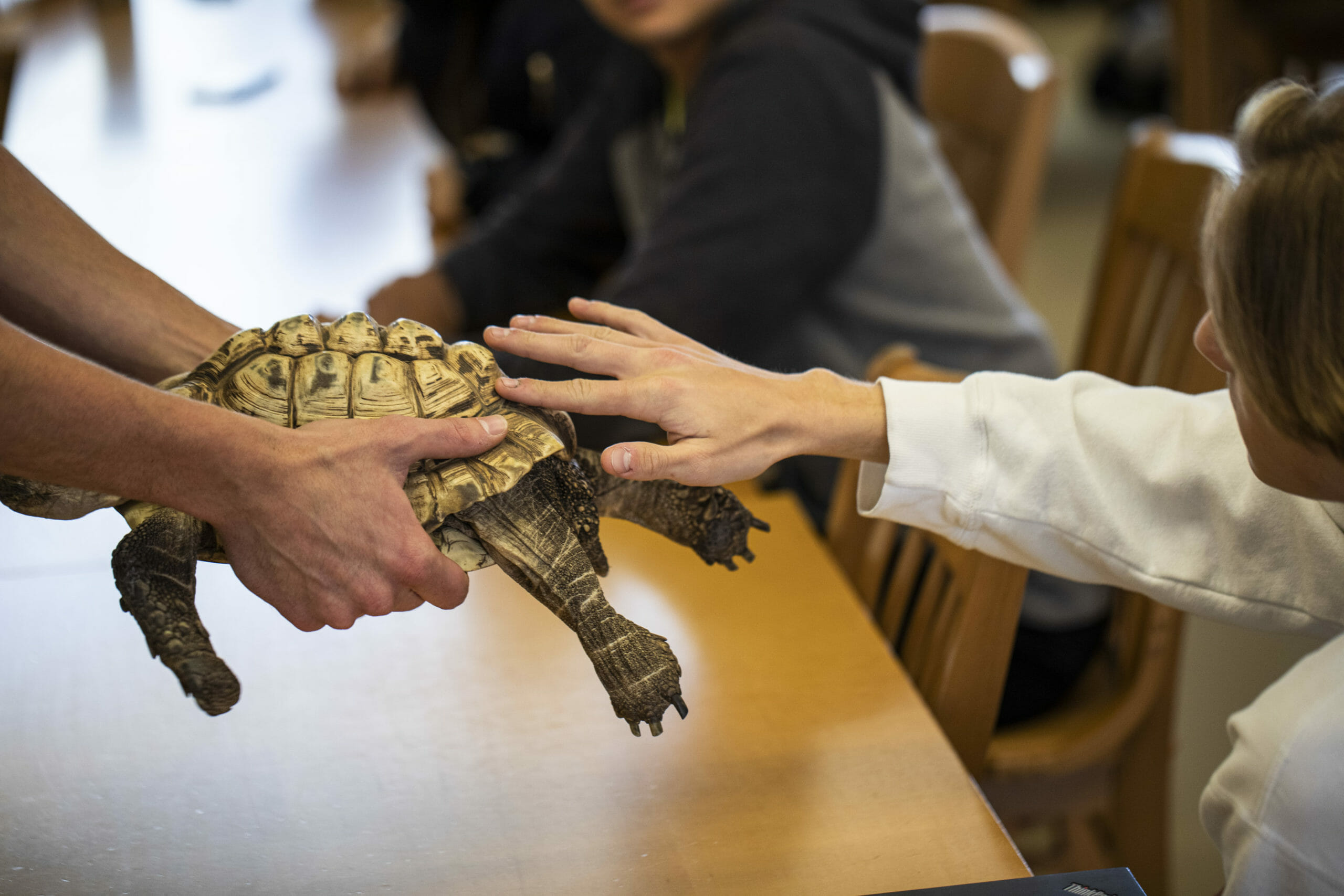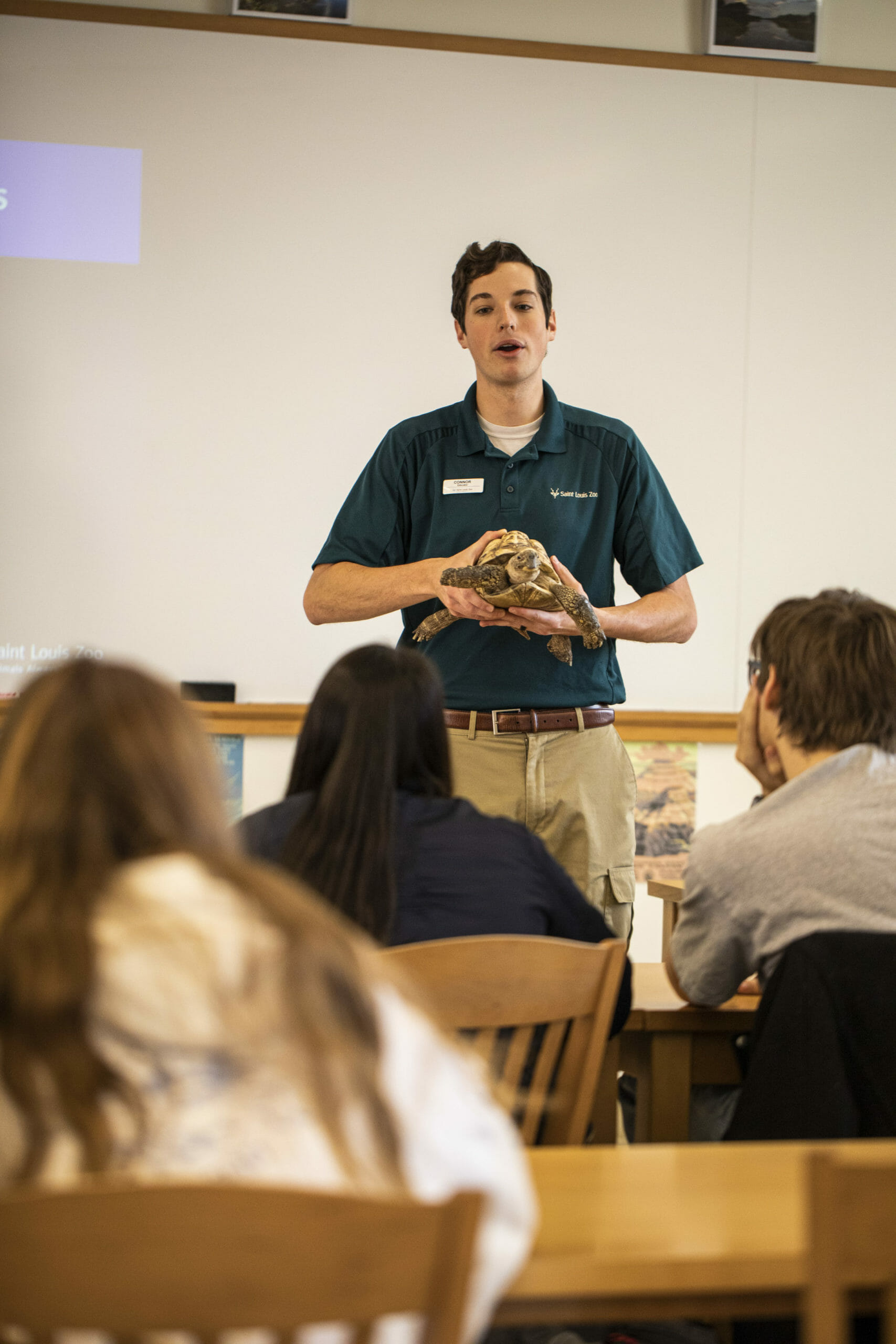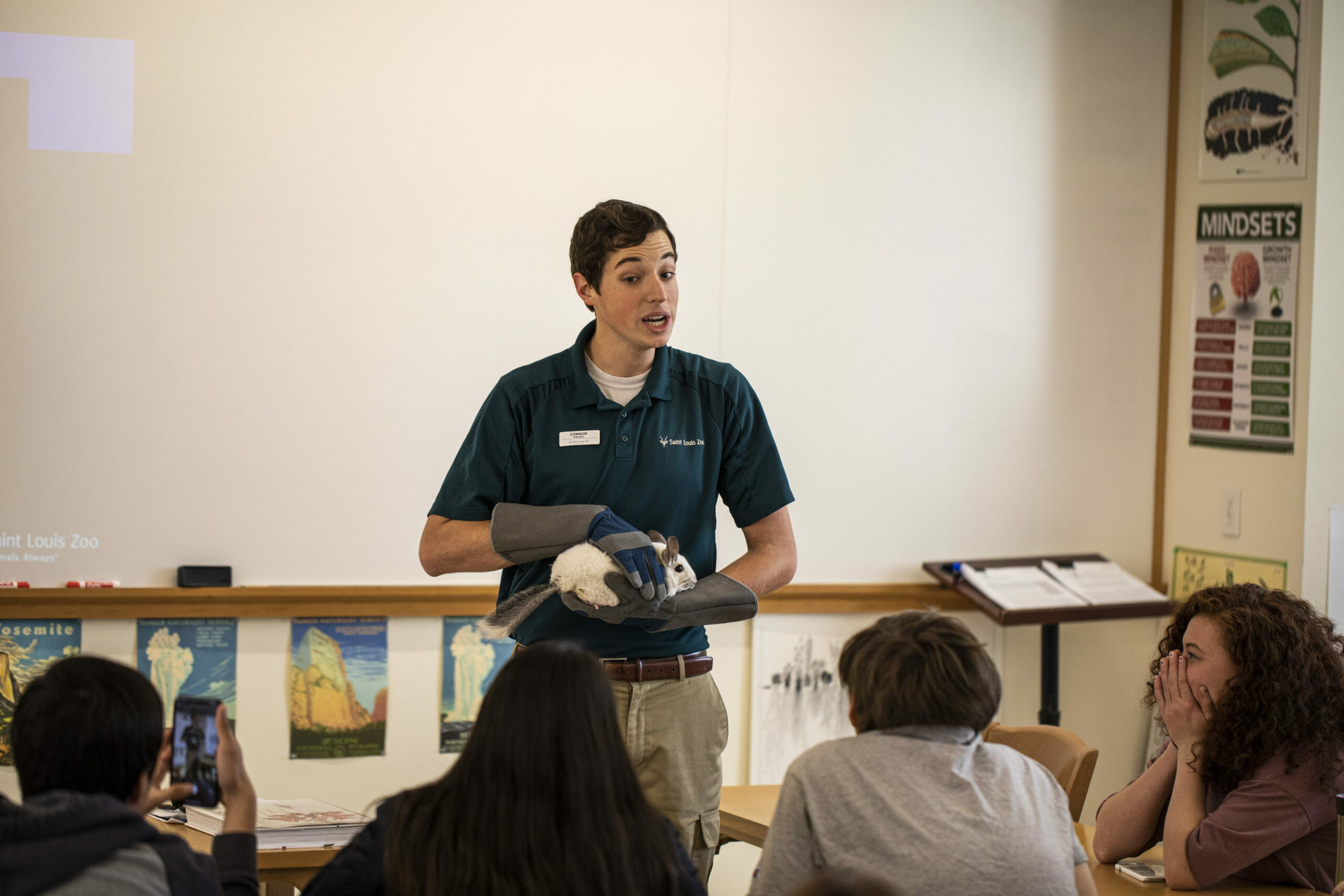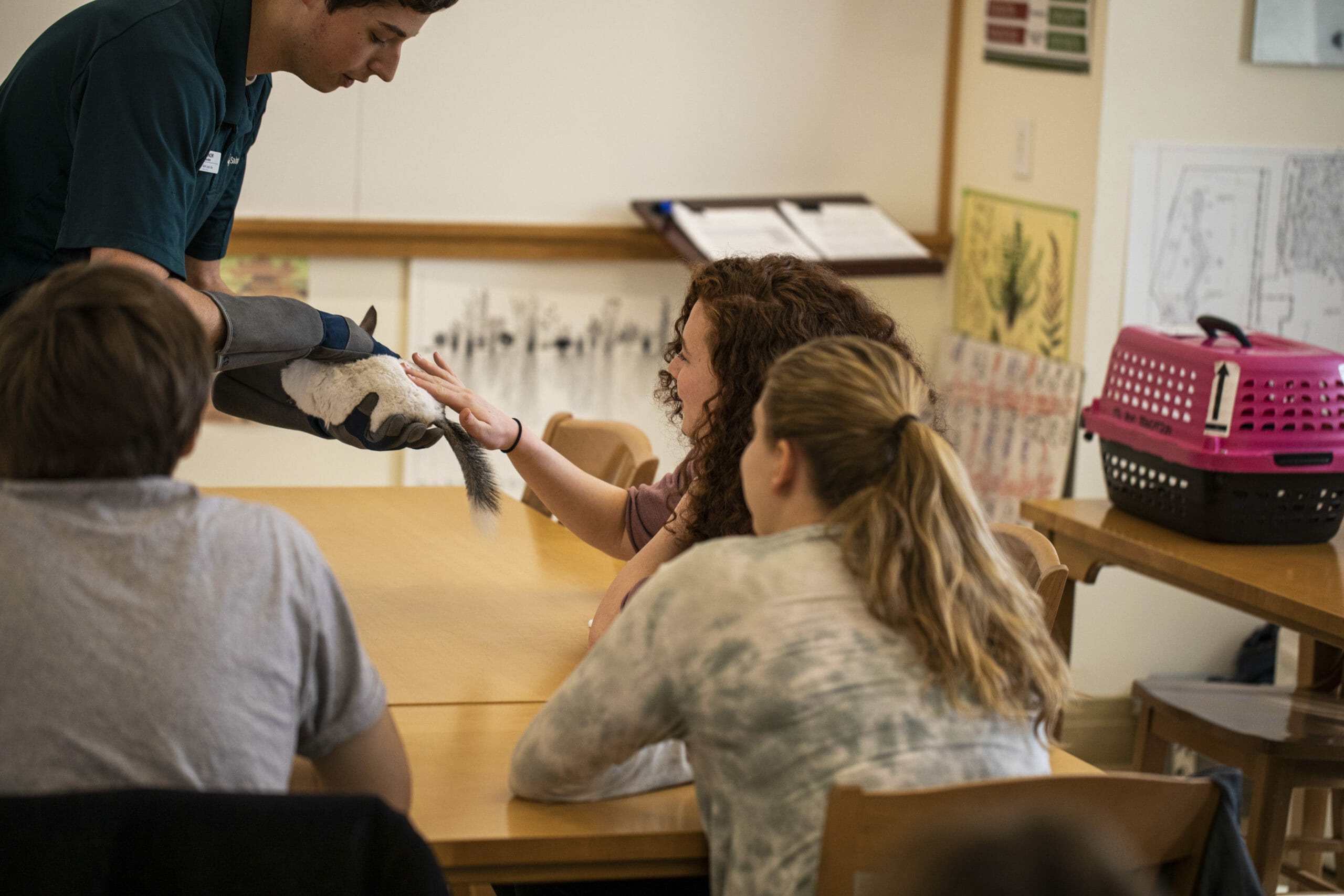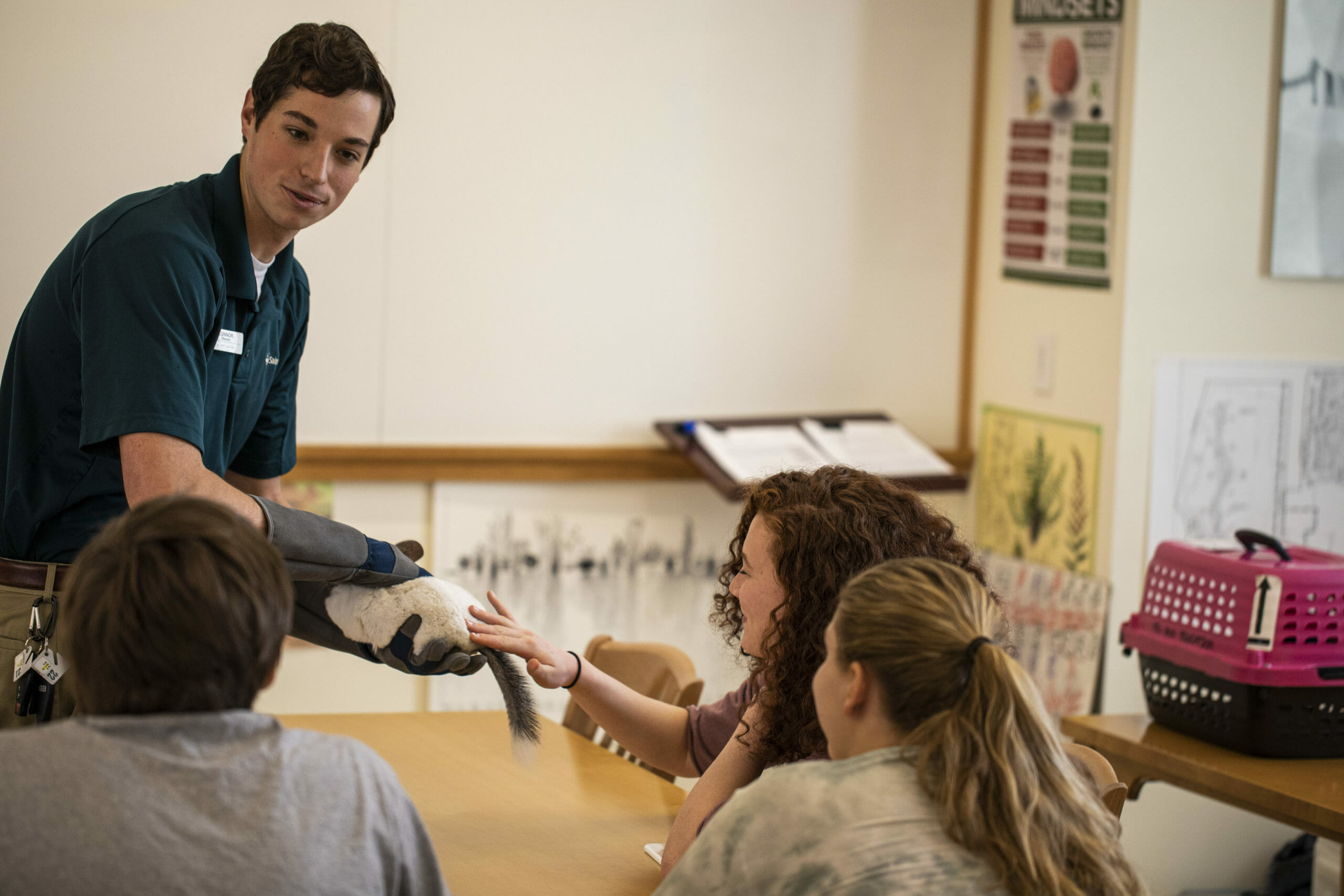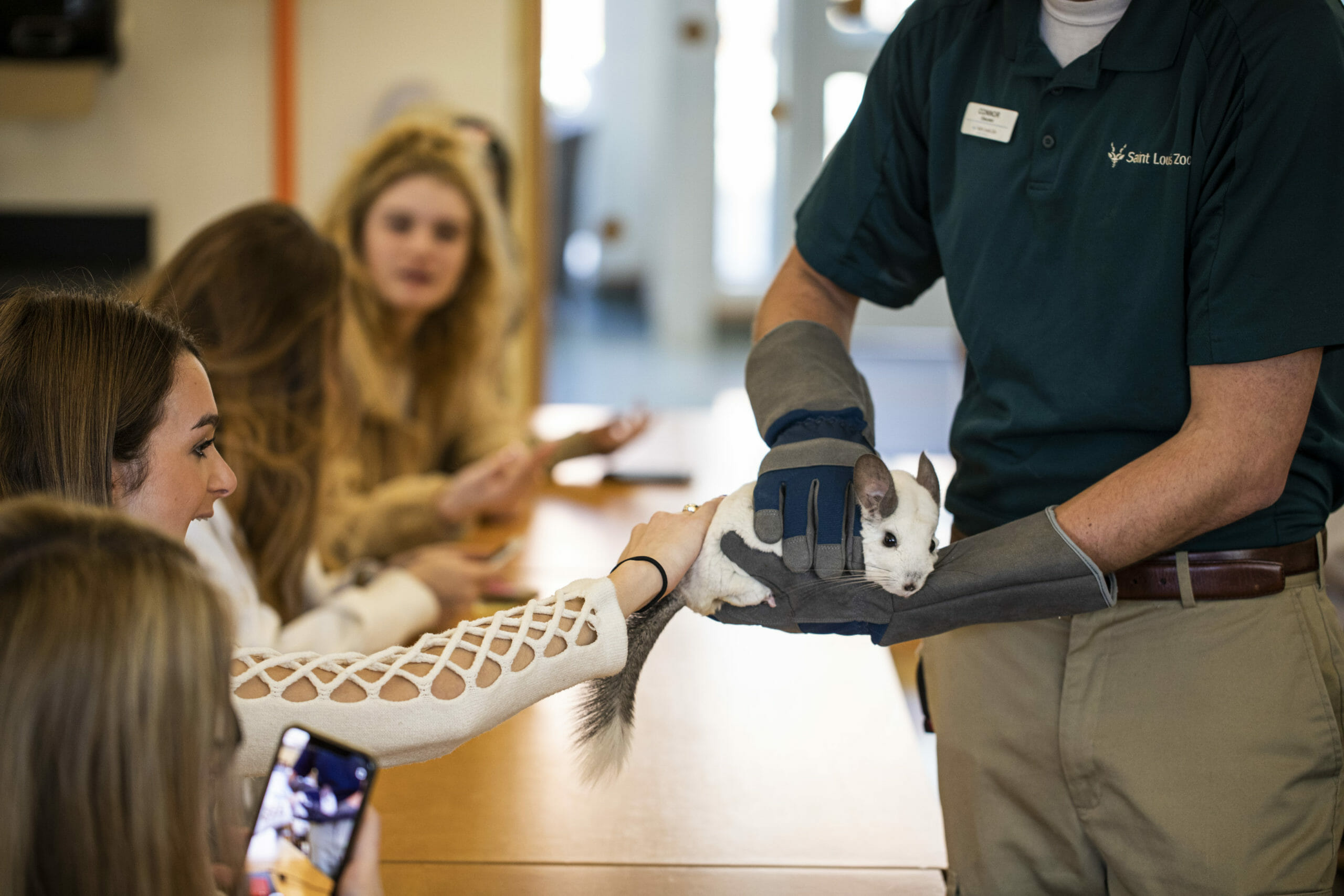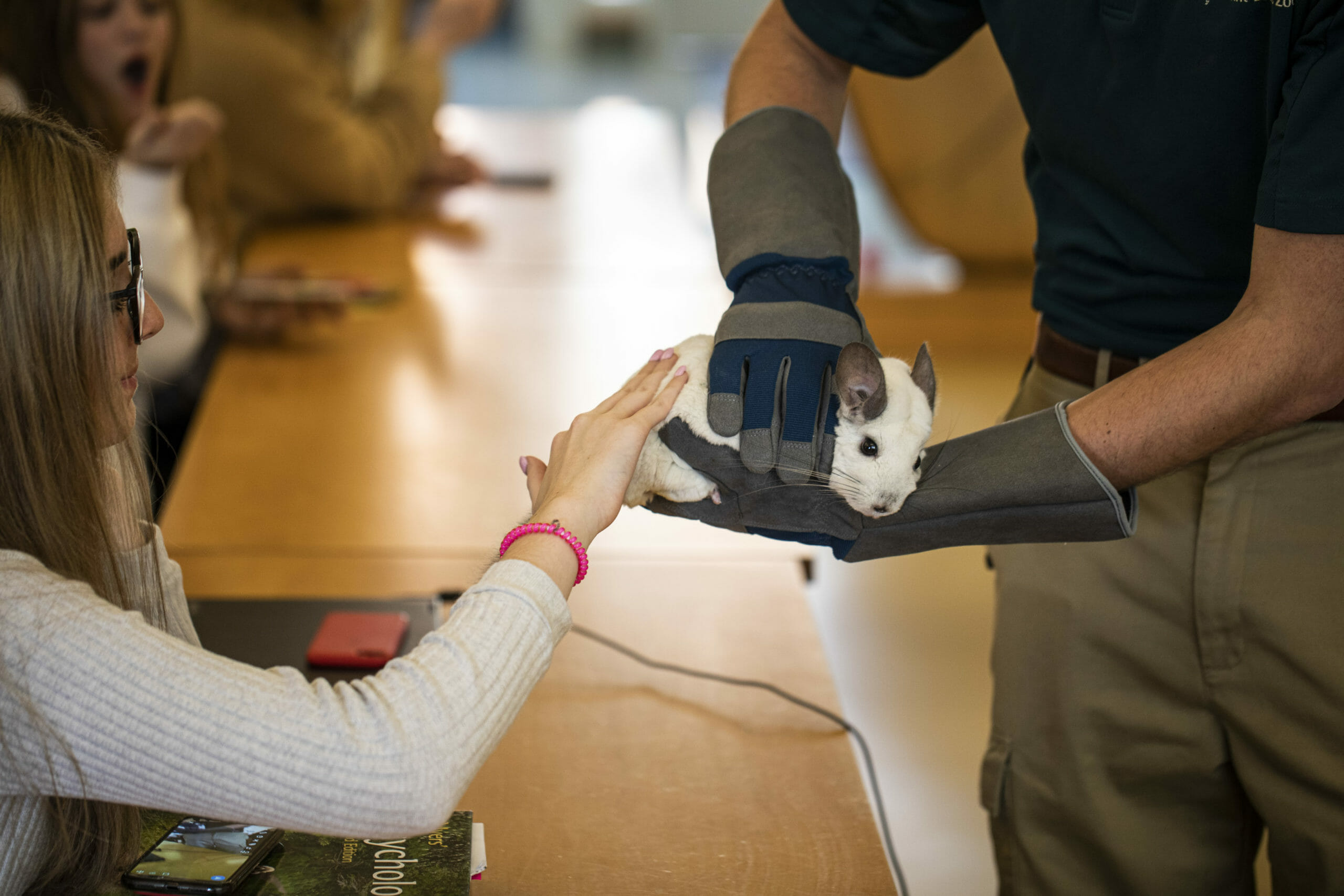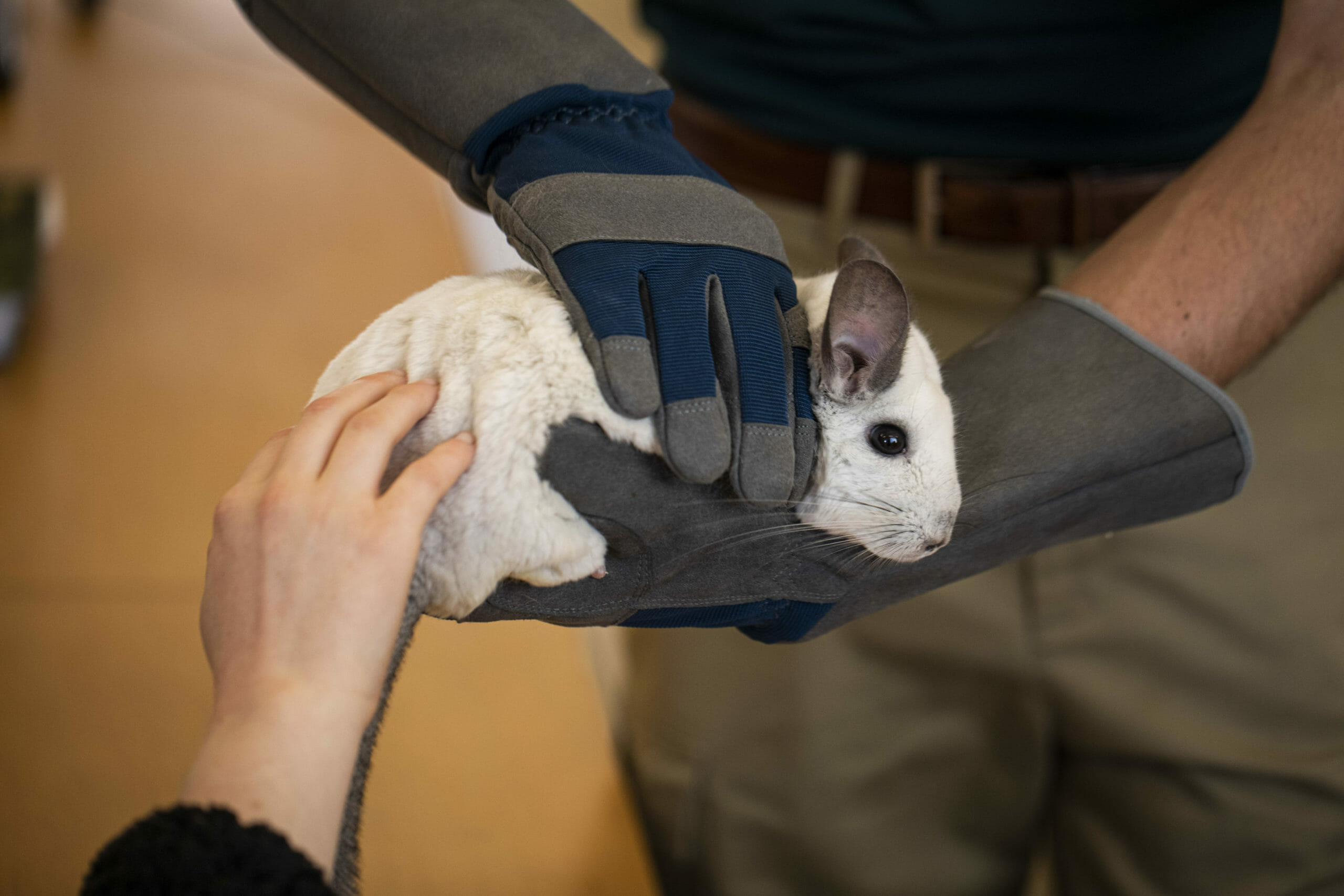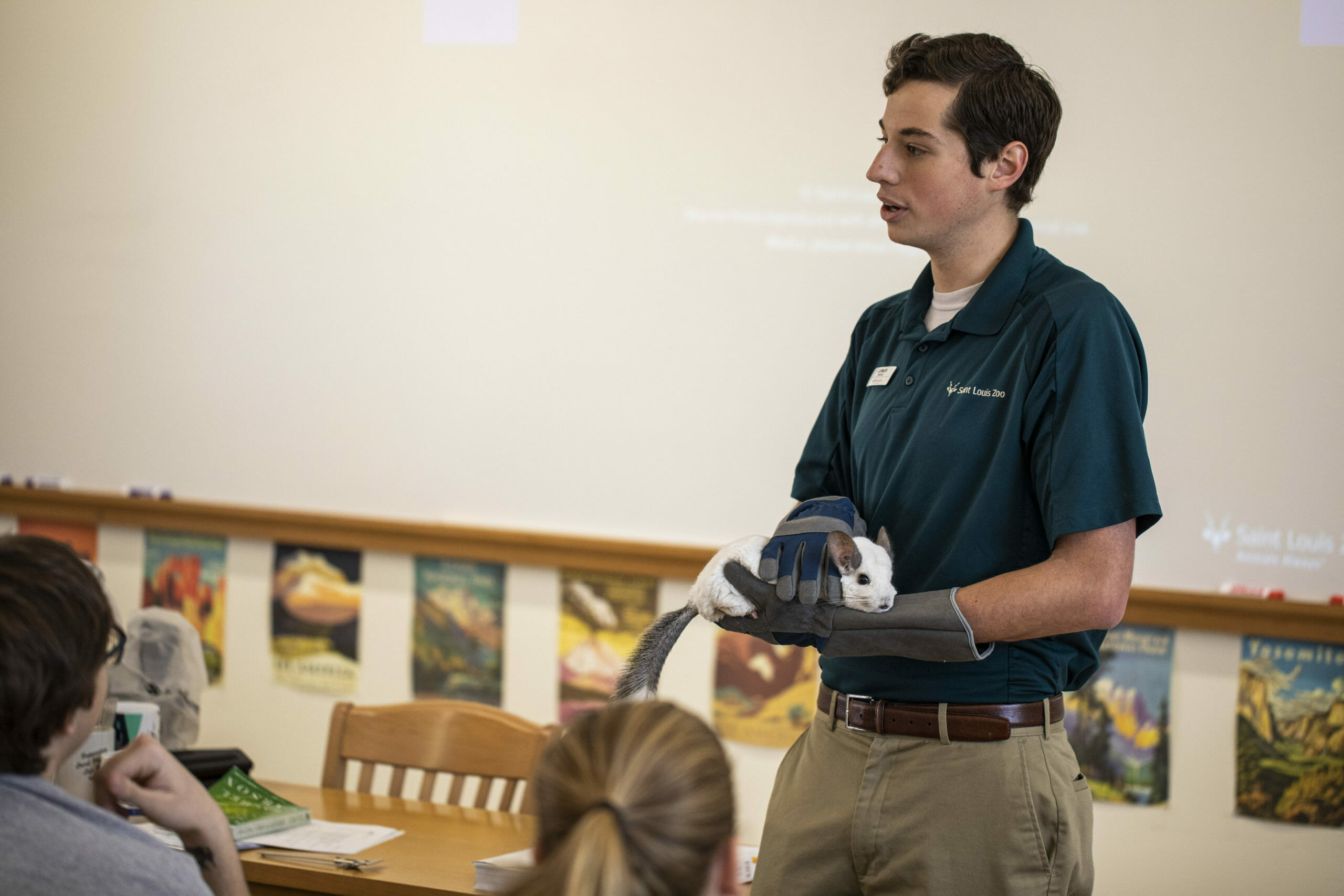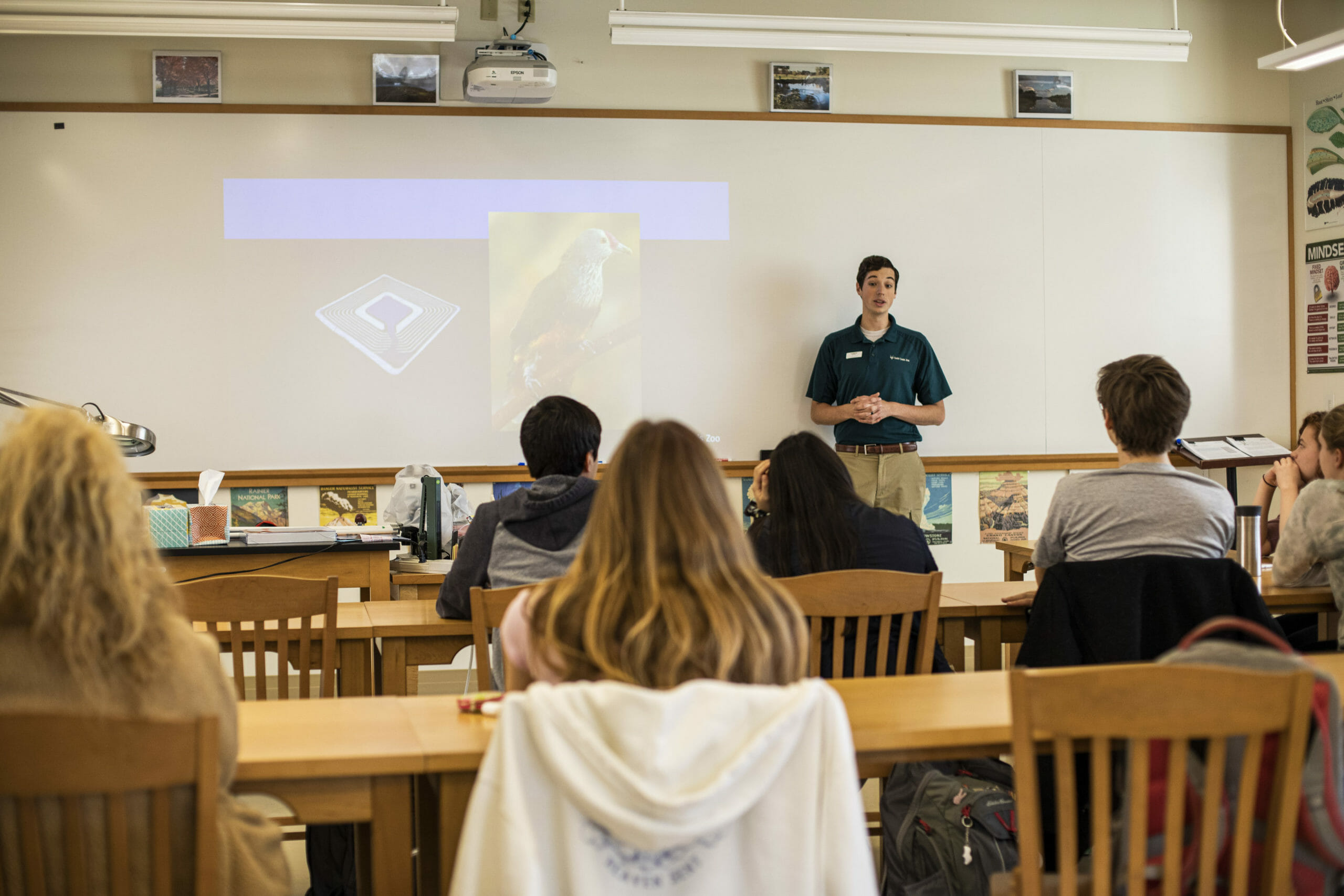The St. Louis Zoo Student Outreach program visited our Upper School Animal Behavior class this week, bringing several small animals for students to study and interact with.
Have you ever wondered why animals do certain things? Is animal behavior important in a zoo? The St. Louis Zoo’s program helps students discover why scientists study animal behavior and explore the different methods that they use. Students were able to practice a few of the research methods during live animal presentations.
This year, a zoo representative brought a chinchilla, a desert tortoise and a snake for the students to observe and touch. He gave interesting facts about the visiting animals, talked about several animal behavior studies that the St. Louis Zoo is currently conducting and shared stories about specific animals at the zoo.
As they delighted in petting the chinchilla, students learned that these animals have up to 50 hairs growing out of a single follicle. As a comparison, we humans have follicles that produce only one to three hairs. This means that chinchilla fur is extremely dense and it’s important that chinchillas not get wet. If they do, the water will not evaporate and mold will grow beneath their fur. Chinchillas clean themselves with a dust bath instead, which will naturally pull the oils from their fur.
In the Animal Behavior class, made up of mostly 12th graders and a few 11th graders, students learn about the basics of behavior and methods of animal research. They explore behaviors that are used for communication, navigation, reproduction and parental care as well as study how animals forage, learn and bond socially. They learn about the proximate and ultimate causes of behavior, examine the costs and benefits of behavior and put the idea of behavior into an evolutionary context. Students also observe animals at the zoo outside of class time.
It’s clear that our students had a great time interacting with these amazing animals from our world-class zoo!
